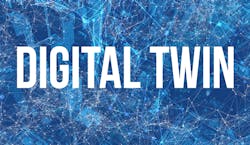Make the transition to IT-OT-ET convergence faster with a digital twin
For asset intensive industries such as manufacturing, there is a real reliance on transactional and business process information (IT), monitoring and analyzing industrial assets (OT), and the engineering design data (ET). While they are important in their own right, they become more beneficial with the introduction of interoperability between the systems and when this IT-OT-ET information is aligned.
The ability to access and share the same information starting in the design stage and straight through to operations is essential to reduce project delays and increase production. More importantly, it provides consistent and accurate information at all times, and saves you from having to look for the right, up-to-date information.
One way to leverage this information is within a digital twin. The interest in and adoption of digital twin solutions are becoming more important due to their flexibility, accessibility and scalability. Users can start small and expand out as they grow and realize the insights needed to make more accurate decisions. The information they contain is transparent across all teams within any project, housing critical information from engineering and O&M, all surfaced within the open, immersive and connected digital-twin environment. This ensures that any digital twin is built, maintained, and kept continuously up to date across the entire lifecycle.
The focus to date has been on how to build digital twins. However, what is becoming increasingly important for organizations is keeping those digital twins—and the complete set of information about their assets (not just models and engineering)—up to date and accurate.
So how do those organizations connect to their supply chains, maintain an open choice in tooling and working effectively on a global scale? Openness, collaboration, reality modeling, and a single source of truth is the catalyst for this change, and digital twins are at the forefront to help drive a longer term and sustainable approach to manufacturing.
The other axis of change will be connectivity between the digital twin and operational and transactional systems. The legacy approaches of copying data and building warehouses cannot handle modern volumes or velocities, and new approaches to federation and integration are essential. Packaged integration tools are leading the way in delivering these integrations in the industry, making the transition to IT-OT-ET convergence smoother and faster.
Richard Irwin is senior solutions marketer with Bentley Systems
